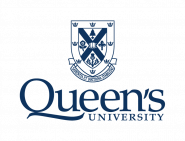Module 7: Writing for Specific Purposes
Module Learning Outcomes
By the end of this module students will be able to:
- Identify the purpose of writing, such as: executive summary, client report, status update to supervisor, and process summary. [CLO 1, 2, 5]
- Recognize the difference between formal, informal, technical, and professional writing. [CLO 2, 4]
- Use an appropriate tone for audience and purpose. [CLO 1, 5]
- Determine appropriate language choices. [CLO 1, 2, 4]
- Organize and format a piece of writing to suit the purpose (tables, charts, diagrams, appendices). [CLO 1, 3, 5]
Resources (Bank)
Green Consultants Report
Description of how to be used: Used as source material for Recommendation, Status Report
Download: Green Consultants Report (PDF, 165 KB)
Request for Proposal (RFP) Helping Pilots Fly Drones Safely and Legally
Description of how to be used: Used as source materials for Executive Summary, Status Report, Specifications
Download: RFP Helping Pilots Fly Drones Safely and Legally (PDF, 1.9 MB)
Executive Summary Rubric
Description of how to be used: Used by students to construct an individual assessment tool
Download: Executive Summary Worksheet (PDF, 156 KB)
Status Report Rubric
Description of how to be used: Used by students to construct an individual assessment tool
Downloads: Status Report Rubric Form (PDF, 150 KB)
Specifications Rubric
Description of how to be used: Used by students to construct an individual assessment tool
Download: Specification Rubric Form (PDF, 151 KB)
Student Worksheet
Description of how to be used: Definitions of report terms
Download: Student Worksheet (PDF, 151 KB)
Full Module
Download all of Module 7 with Resources (PDF, 1.8 MB)
Face to Face Workshop Plan
Description of Workshop
This module provides an opportunity for students to see how changes in language, organization and/or content are key to producing effective communication for specific audiences and purposes.
Time for Completion
90-120 minutes
Materials
One copy per student of a short Green Consultants Report (PDF, 165 KB) or RFP Worksheet (PDF, 1.5 MB) that students can use to identify relevant information and organization decisions.
Ideally, this workshop would be held in a room that could project documents from students’ laptops/tablets.
Workshop Preparation Instructions
The facilitator needs to clarify with engineering instructors their definitions and expectations of the different types of engineering communication (executive summary, status report or update, process summary, client report, recommendation, specification document, etc.) Although this module will use an executive summary, status update and recommendation as examples, the facilitator should feel free to use examples that are most relevant to the group of students they are working with. It is most important to confirm with the engineering instructors and the facilitator’s institution the differentiating characteristics of acceptable examples for each of the different purposes.
Procedure
Step 1: (~5 minutes)
Distribute a copy of the inspection report or design brief. Explain that students will use the report/brief as their source material to produce drafts of three different documents for three different audiences and purposes.
Step 2: (~10-15 minutes)
As a large group, identify the purpose of each of the three events and the audience (reader/listener) and what structures and content would be most appropriate for each of the documents.
Facilitator Notes:
An executive summary (PDF, 156 KB) will be read by someone who may only have a general idea of the project, but who needs enough information to make a go/no go type of decision. The reader may or may not have an engineering background but will be familiar with the language of engineering projects. There is an expectation of all necessary information in a concise form.
Status Report or Status Update (PDF, 150 KB): This may be oral or written. Generally given to a supervisor or project manager, lab supervisor in the workplace who will most likely be familiar with the project, technically knowledgeable and primarily interested in what has been accomplished, will be accomplished and if there are any problems or risks to successful completion or next steps. There is probably a greater degree of familiarity personally and so less formal in nature, but not less professional.
A specification document (PDF, 151 KB) will be for specific readers to provide the requirements that a design must meet. The document acts as a requirements checklist. Because clarity and precision are essential, technical language is usually preferred over everyday language. There is no room for ambiguity in specification documentation.
Step 3: Two Approaches (~30-40 minutes)
Divide group into pairs. Each pair will produce one rough draft of one of the different documents (status report, executive summary, specifications document). Randomly assign one of the three different documents to different pairs of students. This way they could see the differences in practice. They spend 15-20 minutes to draft their assigned document.
When the students finish their draft, each pair joins two other pairs who worked on a different document, and they create a group of three pairs. Then they work all together for about 15-20 minutes to see the differences of language, format, structure, etc. that each document has.
Step 4: (~30 minutes)
Student pairs present their analysis of the purpose, the audience and the decisions that analysis prompted (e.g. what information to include/exclude, organization, language choices) and display/share their documents.
Supplemental Materials
No supplemental material is needed here.
Assessment
After students have watched the presentations of their peers, they can be asked to fill in the Executive Summary, Status Report, Specification Document rubrics to create individual assessment tools. Students will use the formatting, structure, content, and organization characteristics they identified to create a description for each category.

